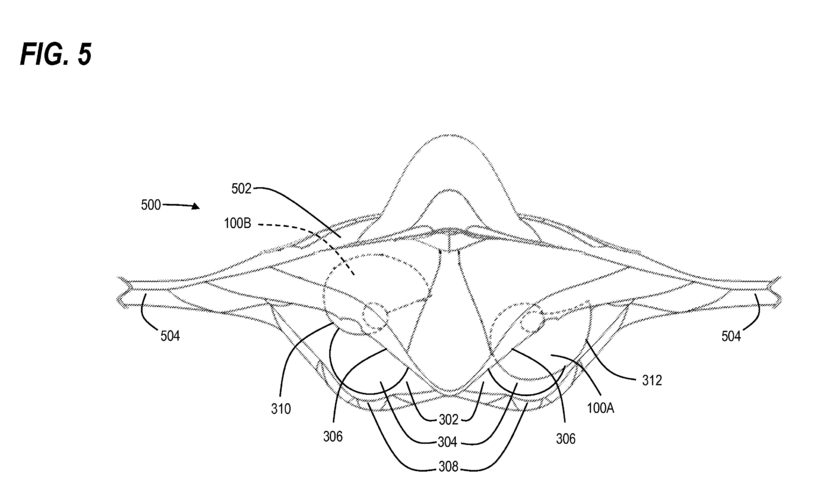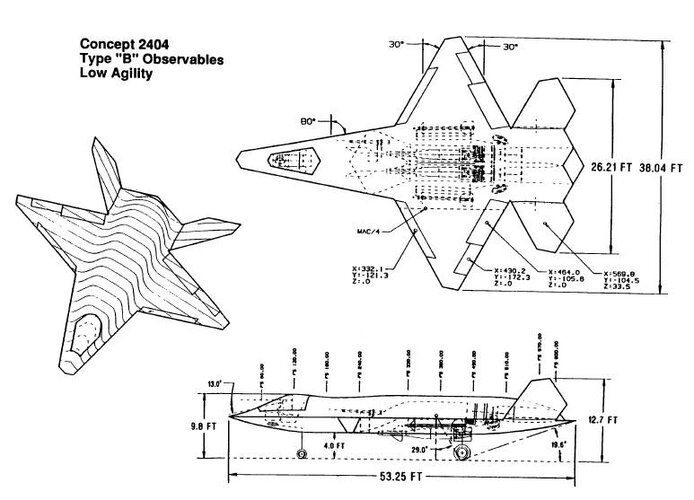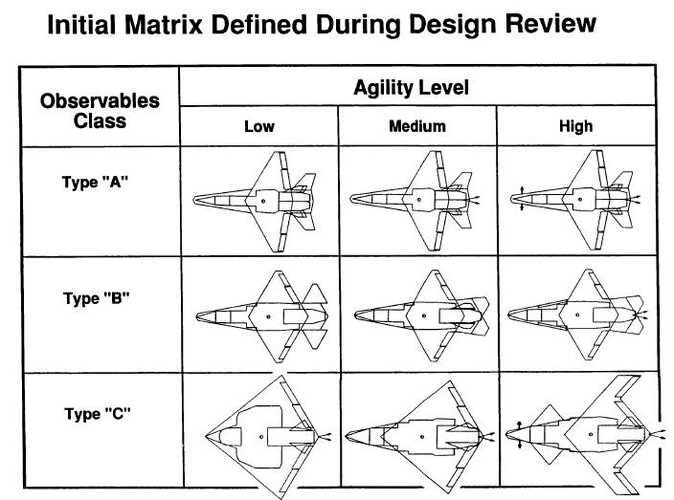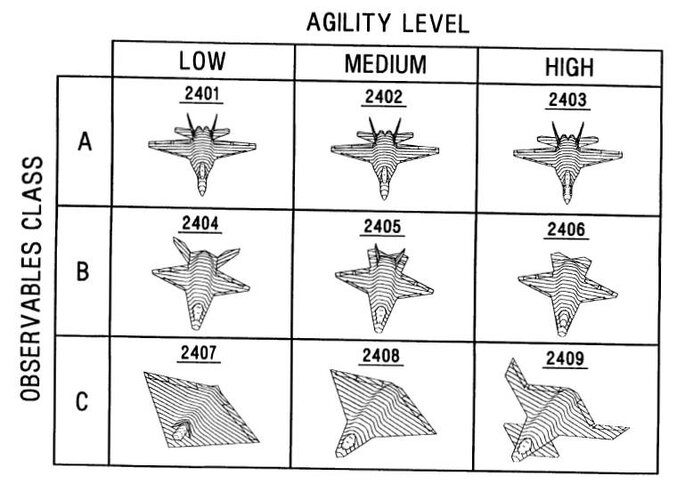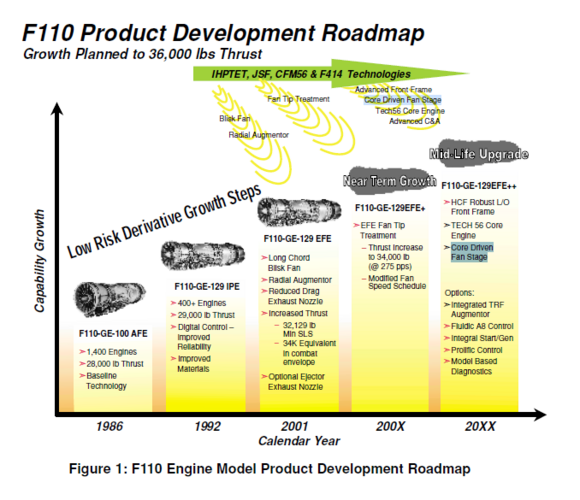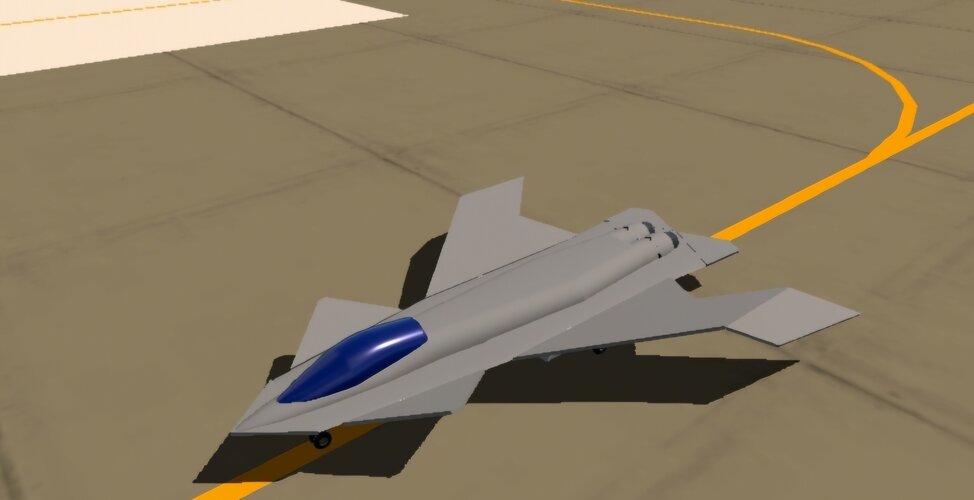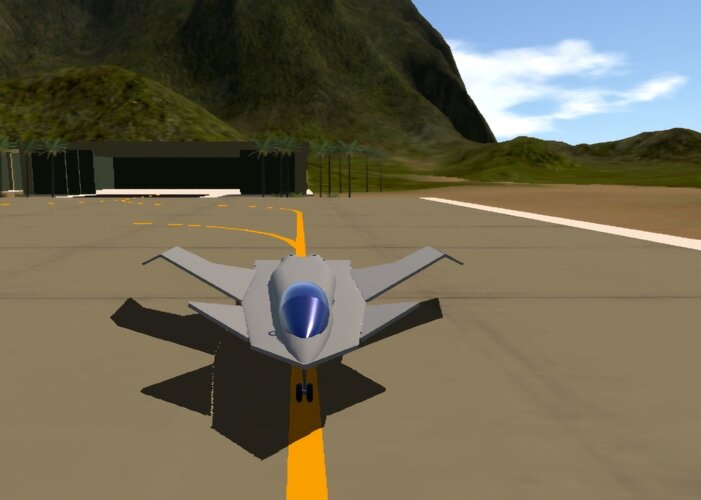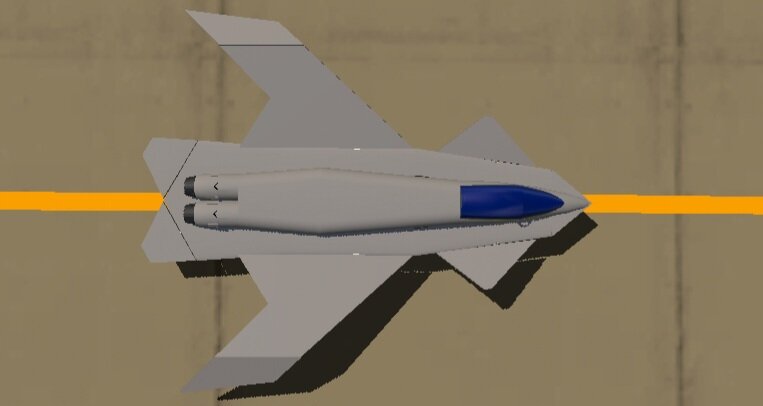They have not been manufactured and are 20+ year old designs that lost to the F119and F-135So why not consider the existing variable cycle engine, such as YF120, F136?
You are using an out of date browser. It may not display this or other websites correctly.
You should upgrade or use an alternative browser.
You should upgrade or use an alternative browser.
Boeing F-47 Next Generation Air Dominance (NGAD)
- Thread starter Bounce
- Start date
Why not a F-135/B-21 engine variant?F/A-XX will be using an F110 derivative with variable-cycle features.
The AETP/NGAP 3-stream idea was eliminated a while ago -- cost was reason #2. Can't say what #1 is.
- Joined
- 11 February 2007
- Messages
- 2,475
- Reaction score
- 4,099
Entirely valid, it's been a bit of a week!
Forest Green
ACCESS: Above Top Secret
- Joined
- 11 June 2019
- Messages
- 9,225
- Reaction score
- 16,600
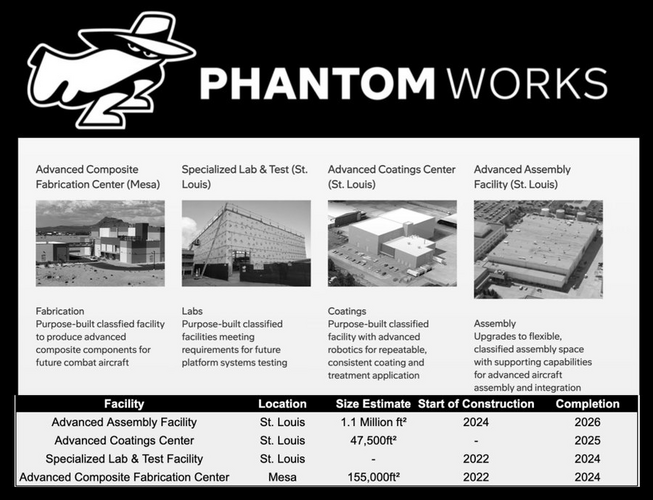
View: https://x.com/AirPowerNEW1/status/1903411088621744466
"While F22 is currently the finest air superiority fighter in the world, and its modernization will make it even better, the F47 is a generational leap forward. The maturity of the a/c at this phase in the program confirms its readiness to dominate the future fight" ~ USAF
View: https://x.com/AirPowerNEW1/status/1903135249141223561
"While our X-planes were flying in the shadows, we were cementing our air dominance – accelerating the technology, refining our operational concepts, and proving that we can field this capability faster than ever before.. The F-47 will fly during President Trump’s administration"
View: https://x.com/AirPowerNEW1/status/1903127789219320103
FlyGuy369
Flying is fantastic
- Joined
- 15 June 2023
- Messages
- 243
- Reaction score
- 640
I won't be surprised if this is what the intakes look like, but furthermore, the design characteristics are cognizant of these from earlier studies
Attachments
- Joined
- 11 February 2007
- Messages
- 2,475
- Reaction score
- 4,099
There's definitely a lot of overhead stuff being reflected in the canopy, the difference with the final arc is it seems to be more defined and with a little bit of depth to it. You could well be right, but I'm not entirely convinced yet.Playing around with photoshop settings a bit, it doesn't look like it. It looks to be just the top of the canopy.
- Joined
- 11 February 2007
- Messages
- 2,475
- Reaction score
- 4,099
I think the standard use was to slightly destabilise an existing design as flight controls got more capable. But that's not how you would do it on an ab initio design.What purpose would a fixed canard serve?
TheKutKu
ACCESS: Secret
- Joined
- 13 February 2023
- Messages
- 458
- Reaction score
- 1,364
Question: we knew Safran, France, developed the landing gear for one of the prototypes. Was that this one or LM's? What do you think?
IMO, the one we are given to see does not require such expertise as Safran could have brought-in.

Safran va fournir le train d'atterrissage pour un avion de nouvelle génération développé par Lockheed-Martin - Zone Militaire
Le groupe français Safran en a trop dit... ou pas assez. Via un communiqué diffusé le 31 mai, il a en effet indiqué que sa filiale "Safran Landing Systems
 www.opex360.com
www.opex360.com
It was for Lockheed.
However, the variable cycle version of the F110 engine is also a new engine, and the YF120 and F136 are certainly important sources of technology. Because ccording to the article "F110-GE-129 EFE – ENHANCED POWER THROUGH LOW RISK DERIVATIVE TECHNOLOGY", the F110-GE-129EFE++ will have a core driven fan stage, and the core driven fan stage is one of the unique structures of the YF120.They have not been manufactured and are 20+ year old designs that lost to the F119and F-135
Attachments
Why not a F-135/B-21 engine variant?
Inappropriate size and/or power.
ETA: the PW9000 or whatever it is must be too physically large with too much bypass for a military fighter, let alone supercruise, and F135 is too heavy for anything wearing two engines and a 80,000 lb MTOW.
Last edited:
- Joined
- 9 March 2021
- Messages
- 87
- Reaction score
- 366
Don't know.So why not consider the existing variable cycle engine, such as YF120, F136?
My guess is, beginning in the 2014 timeframe, GE (along with P&W, and maybe Allison/Rolls?) routinely provided various engine options to inform the Navy's initial analysis-of-alternatives (AoA) and other early studies. The GE options would have likely included everything from clean-sheet designs based on AETP and ADVENT activities, to resurrected versions of the YF120 and F136, to technologically refreshed versions of the F110 and F414. The Navy would have considered engine size compatiblity as well as other key technical characteristics as compared to top-down operational requirements derived for the air platform.
Also see: https://www.secretprojects.co.uk/th...-asfs-news-analysis.3536/page-235#post-750274
In my personal opinion, Pratt&Whitney's poor performance in TF30-P-412/414 and F401-PW-400 has left a very negative impression on the Navy. Secondly, variable cycle engines have better fuel efficiency than traditional engines, which is beneficial for extending the range. GE has more experience in variable cycle technology than Pratt&Whitney.Why not a F-135/B-21 engine variant?
One thing I find most interesting is that F-47 does not seem to be the battlestar that sacrifices agility for range which some of us (including me) were expecting…this seems like a more fighter sized aircraft with potentially a high degree of maneuverability. Ironically “J-36” seems much more like I envisioned NGAD, outside the triple engine arrangement.
Either NGAD range or payload requirements must be a lot lower than I anticipated, or a combination of both. I’m leaning towards payload being 6-8 AIM-120 sized weapons rather than any oversized weapon carriage, which probably changes the fuel fraction a lot. But it is still hard to imagine much more than a thousand mile combat radius.
One thing that occurs to me is that the B-21 could stand in as a heavy weapons carrier if oversized weapons became absolutely necessary, and that AIM-260 is seen as enough to reach out to practical sensor ranges for the foreseeable future. That would take heavy weapons bays off F-47s plate and reserve more volume for fuel.
Either NGAD range or payload requirements must be a lot lower than I anticipated, or a combination of both. I’m leaning towards payload being 6-8 AIM-120 sized weapons rather than any oversized weapon carriage, which probably changes the fuel fraction a lot. But it is still hard to imagine much more than a thousand mile combat radius.
One thing that occurs to me is that the B-21 could stand in as a heavy weapons carrier if oversized weapons became absolutely necessary, and that AIM-260 is seen as enough to reach out to practical sensor ranges for the foreseeable future. That would take heavy weapons bays off F-47s plate and reserve more volume for fuel.
The demonstrator program (Air Dominance Initiative and Aerospace Innovation Initiative) built two X-planes, with (probably) two vehicles each. One X-plane for the Air Force, and one for the Navy.
The best information I have been able to obtain indicates that Lockheed built the Air Force demonstrators, and Boeing the Navy demonstrators. I have not found that Northrop Grumman built demonstrators under this program using DoD funding (and I should have). It's possible that they did so using their own money, some other arrangement or program, or that I am incorrect. But there is considerable evidence that only Lockheed and Boeing built (and flew) the demonstrators.
Not sure I understand you. Are you talking about NGAD demonstrators here? Ones that flew for last five years?
And if so, are you suggesting that Boeing 's demo plane, which you say was made for navy's program, has now won the USAFs program as the F-47?
Please correct my interpretation.
I'm also very curious about this, quellish.
bring_it_on
I really should change my personal text
- Joined
- 4 July 2013
- Messages
- 3,592
- Reaction score
- 3,601
My dimensions are slightly different. But I'm assuming a 15 ft wide flag in the backgroundPolitics aside, I would love to keep the focus on what we can see (as limited as it is). I used some rudimentary scaling metrics based on the nose wheel, the front chine itself is about 7 feet wide and the observable wingspan (I think they're hiding the tips) is roughly 25 feet. The wing sweep is roughly 42-48 degrees of sweep back. Canopy width at rear is 4.25, front is 3.6. Height is 2.74. Mind you these are extremely rough guesses. I used the nose wheel diameter of the F15 at 13 inches to get this. I have a good amount of info on Boeings patent efforts but I didn't see this coming at all. Trying to design a working render is tough missing the whole back of the bird.
FlyGuy369
Flying is fantastic
- Joined
- 15 June 2023
- Messages
- 243
- Reaction score
- 640
What do you have? Let's hear it! We also have to account for depth dimension distortionMy dimensions are slightly different. But I'm assuming a 15 ft wide flag in the background
bring_it_on
I really should change my personal text
- Joined
- 4 July 2013
- Messages
- 3,592
- Reaction score
- 3,601
About 6.3 fr for radome and 21-22 feet for the observable spanWhat do you have? Let's hear it! We also have to account for depth dimension distortion
FlyGuy369
Flying is fantastic
- Joined
- 15 June 2023
- Messages
- 243
- Reaction score
- 640
Very close indeed!About 6.3 fr for radome and 21-22 feet for the observable span
- Joined
- 6 August 2007
- Messages
- 3,819
- Reaction score
- 5,567
Not sure I understand you. Are you talking about NGAD demonstrators here? Ones that flew for last five years?
And if so, are you suggesting that Boeing 's demo plane, which you say was made for navy's program, has now won the USAFs program as the F-47?
Please correct my interpretation.
Unrelated, on the matter of the single wheel front landing gear, do you find some detail interesting about it (what?) or is the sole fact the FLG has a single wheel interesting in itself due to weights it indicates?
I'm not sure where the confusion is here.
The Aerospace Innovation Initiative began in 2015/2016 and the X-planes first flew in 2018.
These were demonstrators, not prototypes. The demonstrators did not "win" the NGAD contract and may be very different from the designs that were submitted for the contract. A lot changed in the NGAD program over the years, such as adding CCAs. CCAs were not really a thing in 2016.
Joint Soviet Fighter
ACCESS: Secret
- Joined
- 14 January 2025
- Messages
- 247
- Reaction score
- 275
Bizarre arrangement. Are the intakes straight?I won't be surprised if this is what the intakes look like, but furthermore, the design characteristics are cognizant of these from earlier studies
Any idea of the nature of these or what they might have been testing? In the past we've seen "X" aircraft like the XF-88, and XF-92, testing wing types/configurations and the X-32/-35 testing modes of STOVL and they were full sized aircraft. But we've also seen things like the X-36 (and others) that were much smaller, testing specific technologies.The demonstrator program (Air Dominance Initiative and Aerospace Innovation Initiative) built two X-planes, with (probably) two vehicles each. One X-plane for the Air Force, and one for the Navy.
The best information I have been able to obtain indicates that Lockheed built the Air Force demonstrators, and Boeing the Navy demonstrators. I have not found that Northrop Grumman built demonstrators under this program using DoD funding (and I should have). It's possible that they did so using their own money, some other arrangement or program, or that I am incorrect. But there is considerable evidence that only Lockheed and Boeing built (and flew) the demonstrators.
I'm not sure where the confusion is here.
The Aerospace Innovation Initiative began in 2015/2016 and the X-planes first flew in 2018.
These were demonstrators, not prototypes. The demonstrators did not "win" the NGAD contract and may be very different from the designs that were submitted for the contract. A lot changed in the NGAD program over the years, such as adding CCAs. CCAs were not really a thing in 2016.
I believe our mutual question is your source for the claim that Lockheed built the airforce demonstrator and Boeing built the Navy demonstrator, if you're able to provide that
FlyGuy369
Flying is fantastic
- Joined
- 15 June 2023
- Messages
- 243
- Reaction score
- 640
I think they are, it shows the engine face.Bizarre arrangement. Are the intakes straight?
FlyGuy369
Flying is fantastic
- Joined
- 15 June 2023
- Messages
- 243
- Reaction score
- 640
- Joined
- 30 May 2023
- Messages
- 109
- Reaction score
- 201
I do hope they didnt foreclose the option of housing something at least LRASM sized, even if the IWB layout only supports six -260s. I suppose IWBs like the F-35s would be ok given the repeated comments about F-47 flying w numerous CCAs.
Separately, retractable external pylons for drop tanks or outsized weapons would be a worthwhile investment in the long term.
Separately, retractable external pylons for drop tanks or outsized weapons would be a worthwhile investment in the long term.
I really hope they didn't handicap themselves like they did with the F-22.I do hope they didnt foreclose the option of housing something at least LRASM sized, even if the IWB layout only supports six -260s. I suppose IWBs like the F-35s would be ok given the repeated comments about F-47 flying w numerous CCAs.
Separately, retractable external pylons for drop tanks or outsized weapons would be a worthwhile investment in the long term.
- Joined
- 25 June 2009
- Messages
- 14,643
- Reaction score
- 5,775
My thoughts exactly; just like there is a Globemaster III, it will be a Thunderbolt III. Has to be. Otherwise, why bother skipping to -47? The fact that they didn't skip straight up to F-51 Mustang III makes me wonder if they might have another fighter up their sleeve, though...Side note: Remember that it'd technically be Thunderbolt III. Because the A-10 is officially the Thunderbolt II.
- Joined
- 6 August 2007
- Messages
- 3,819
- Reaction score
- 5,567
Any idea of the nature of these or what they might have been testing? In the past we've seen "X" aircraft like the XF-88, and XF-92, testing wing types/configurations and the X-32/-35 testing modes of STOVL and they were full sized aircraft. But we've also seen things like the X-36 (and others) that were much smaller, testing specific technologies.
1. The Air Dominance Initiative identified a set of technologies/capabilities they thought would be essential for the next generation of "air dominance". These were demonstrated on the aircraft
2. All of the things needed to support those technologies like new manufacturing techniques etc
3. Tailless supersonic cruise
And the most important, they had to demonstrate they still knew how to build a new design fighter. This isn't a joke, a primary reason for doing the demonstrators was to keep the industrial base healthy. Every time funding was not on schedule or there was a threat of sequestration this was brought up.
Joint Soviet Fighter
ACCESS: Secret
- Joined
- 14 January 2025
- Messages
- 247
- Reaction score
- 275
Honestly, even with that carrot/cone "gizmo" deployed you can still a slight portion of the bottom of the engine blades with that gap. I'm not opposed to straight intakes as long as they produce the desired results, but this is really strange. No signs of an IRST or EOTS, but canards, straight intakes, & if the underside is like this, below, I mean, do these guys know what they're doing?I think they are, it shows the engine face.

FlyGuy369
Flying is fantastic
- Joined
- 15 June 2023
- Messages
- 243
- Reaction score
- 640
I'm certain all of this was accounted for ahead of time, only time will tell as details come outHonestly, even with that carrot/cone "gizmo" deployed you can still a slight portion of the bottom of the engine blades with that gap. I'm not opposed to straight intakes as long as they produce the desired results, but this is really strange. No signs of an IRST or EOTS, but canards, straight intakes, & if the underside is like this, below, I mean, do these guys know what they're doing?
View attachment 763957
That worries me the most. I don't see how our industrial base stays competitive without things changing. There should always be programs like ADVENT/VAATE, but for aircraft, going on. There doesn't appear to be any coordinated effort to attract people into aerospace.1. The Air Dominance Initiative identified a set of technologies/capabilities they thought would be essential for the next generation of "air dominance". These were demonstrated on the aircraft
2. All of the things needed to support those technologies like new manufacturing techniques etc
3. Tailless supersonic cruise
And the most important, they had to demonstrate they still knew how to build a new design fighter. This isn't a joke, a primary reason for doing the demonstrators was to keep the industrial base healthy. Every time funding was not on schedule or there was a threat of sequestration this was brought up.
Joint Soviet Fighter
ACCESS: Secret
- Joined
- 14 January 2025
- Messages
- 247
- Reaction score
- 275
FlyGuy369
Flying is fantastic
- Joined
- 15 June 2023
- Messages
- 243
- Reaction score
- 640
- Joined
- 30 May 2023
- Messages
- 109
- Reaction score
- 201
Honestly given the mentioned secrecy around sensitive programs, I’d wouldn’t be surprised at all if we found out in a few quarters that we’ve been discussing the F-19 redux.
What purpose would a fixed canard serve?
Alternatively, is it positive to simply make a canard out of a composite transparent to radar, or is no practical material sufficiently structurally strong enough to withstand the aerodynamic stress in all flight regimes?
If you make the canard OML out of RF transparent material then the internal structure and mechanisms needed for both strength and actuating the canard would become visible to RF.
You have far less ability to shape the internal guts of a canard for stealth because you need them to do things other than hold shape like the OML; things such as a shaft to rotate the canards, or fasteners to mount mechanisms used to rotate the canards.
Joint Soviet Fighter
ACCESS: Secret
- Joined
- 14 January 2025
- Messages
- 247
- Reaction score
- 275
Thanks, lol. I'm here all week, or something...Absolutely!
FighterJock
ACCESS: Above Top Secret
- Joined
- 29 October 2007
- Messages
- 5,510
- Reaction score
- 5,763
It is early days yet Ainen, I would not worry too much about the lack of IRST or EOTS they will be in development right now along side the F-47 we will see them on the EMD aircraft.
bring_it_on
I really should change my personal text
- Joined
- 4 July 2013
- Messages
- 3,592
- Reaction score
- 3,601
You are right. In the heat of the moment, he could have confused supercruise speed with max speed.I would hope so, but this is Trump, who doesn't understand anything about anything. A speed of two? I would love to see him try to pronounce "mach".
I'll see myself out now.
- Joined
- 3 June 2006
- Messages
- 3,082
- Reaction score
- 3,879
Link:Aviation Week's Check 6 Podcast: NGAD Win Puts Boeing Back in the Game With The F-47
What does Boeing’s contract win for the . Air Force’s next-generation combat aircraft, the F-47, mean for the struggling aerospace company? Join Aviation Week’s Robert Wall, Steve Trimble and Matt Jouppi as they dissect the announcement.
Podcast: NGAD Win Puts Boeing Back In The Game With The F-47 | Aviation Week Network
What does Boeing’s contract win for the U.S. Air Force’s next-generation combat aircraft, the F-47, mean for the struggling aerospace company?
Similar threads
-
-
USAF/USN 6th Gen Fighters - F/A-XX, F-X, NGAD, PCA, ASFS News & Analysis
- Started by Matej
- Replies: 10K
-
-
-

